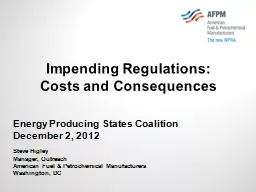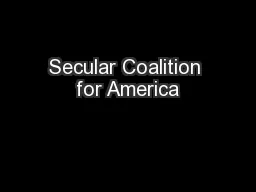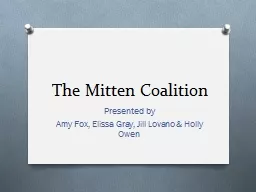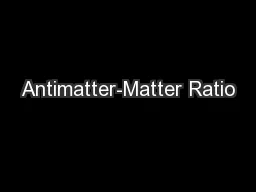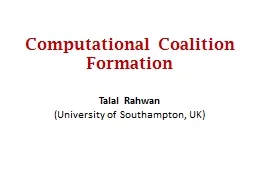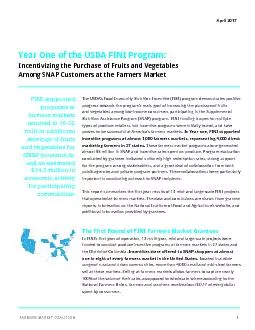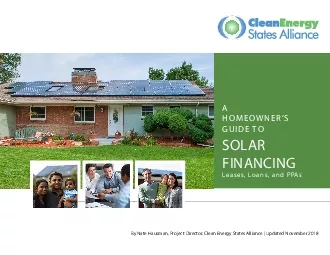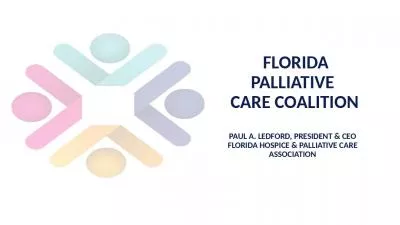PPT-Energy Producing States Coalition
Author : jane-oiler | Published Date : 2016-03-06
December 2 2012 Steve Higley Manager Outreach American Fuel amp Petrochemical Manufacturers Washington DC Impending Regulations Costs and Consequences Regulatory
Presentation Embed Code
Download Presentation
Download Presentation The PPT/PDF document "Energy Producing States Coalition" is the property of its rightful owner. Permission is granted to download and print the materials on this website for personal, non-commercial use only, and to display it on your personal computer provided you do not modify the materials and that you retain all copyright notices contained in the materials. By downloading content from our website, you accept the terms of this agreement.
Energy Producing States Coalition: Transcript
Download Rules Of Document
"Energy Producing States Coalition"The content belongs to its owner. You may download and print it for personal use, without modification, and keep all copyright notices. By downloading, you agree to these terms.
Related Documents

